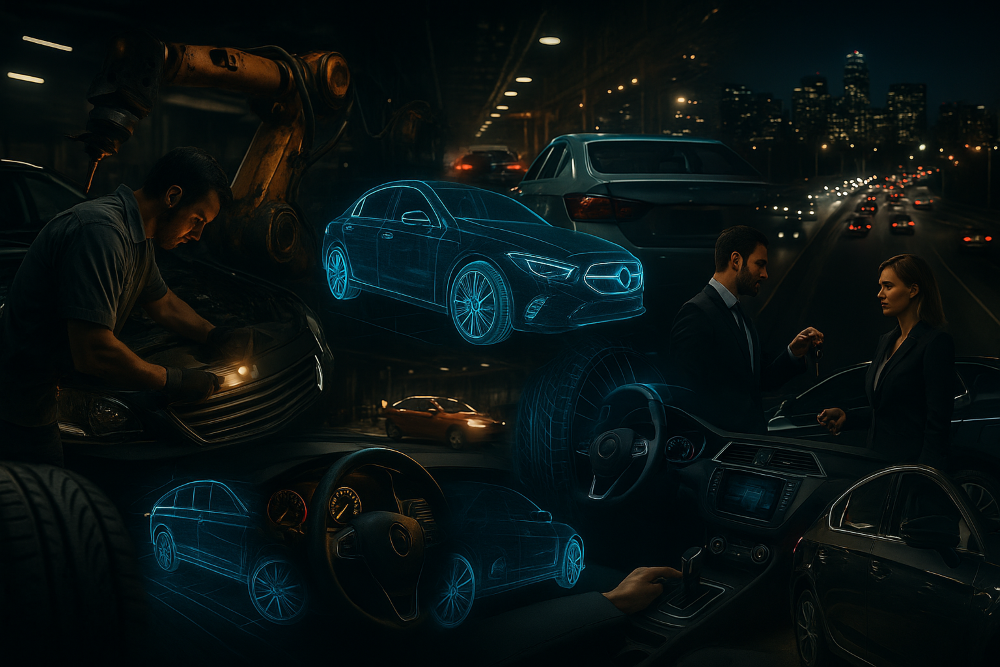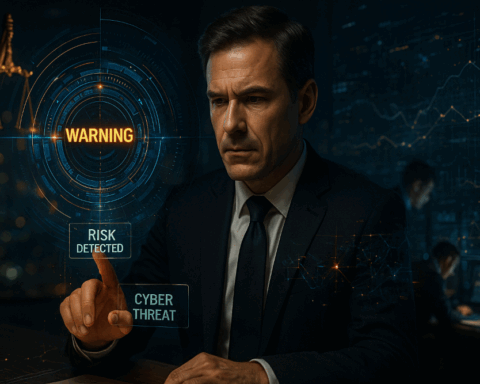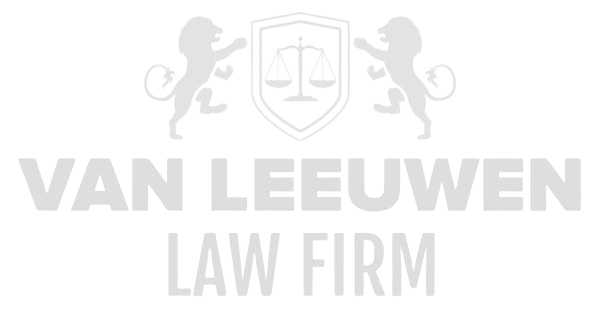The automotive sector should not be perceived merely as an industry; it represents a geopolitical and economic arena where technological ambition, societal expectations, and legal frameworks constantly collide and reshape one another. Within this domain, each vehicle functions as a nexus of direct and indirect value chains: from raw material extraction and intricate supply networks to the consumer behavior that ultimately determines which innovations achieve scalability. The discourse surrounding sustainability and the energy transition has ceased to be an academic exercise; it has become a legal and commercial benchmark that compels enterprises to make hard choices, investments, and strategic repositionings. Manufacturers face the obligation to justify vast capital flows directed toward R&D, production facilities, and infrastructure, while regulatory pressure requires strict compliance navigation and anticipation of shifting legislative landscapes. In this tension, decisions must not only be technically sound but also legally resilient and societally defensible, so that liability, product safety, and consumer protection do not remain latent and explosive risks.
The scale and complexity of the sector dictate that innovation is not a luxury but a condition for survival: conventional business models are disrupted by new entrants, disruptive technologies, and alternative energy sources. Traditional automotive conglomerates grapple with sweeping transformations in design philosophies, supplier relations, and capital allocation, while simultaneously, technology-driven entities redefine the playing field with software-driven revenue models, data ownership, and mobility service ecosystems. The legal implications of this upheaval are profound: intellectual property, data privacy, product liability, and governance of autonomous systems demand sharp legal acumen and operational adaptation. Strategic choices thereby determine not only market position but also the future legal personality and reputation of companies under pressure. The interdependence of technical, economic, and legal parameters renders the automotive sector a permanent subject of intense scrutiny, where failures in foresight carry heavy consequences.
Development and Innovation
The drive for technological advancement manifests first and foremost in the development of propulsion technologies aimed at reducing emissions and maximizing energy efficiency. Battery technology constitutes the epicenter of this pursuit: higher energy density, shorter charging times, and improved thermal stability determine the practical feasibility of electric vehicles. The material composition of batteries directly affects the entire value chain: the extraction of critical minerals, recycling loops, and strategic supply agreements are all shaped by technological choices. Investment in battery research can yield considerable competitive advantages, but it simultaneously brings geopolitical dependencies and environmental concerns. It is not merely a technical undertaking; it is an integrative challenge that combines research, supply chain management, ethical sourcing, and end-user safety.
Beyond battery innovation, software development has become a primary field for differentiation and value creation. Autonomous driving technologies and advanced driver-assistance systems depend on algorithms, machine learning models, and vast datasets. The quality of such systems hinges on the collection, processing, and security of data. The legal implications are immense: liability in case of accidents, the demonstrability of AI decision-making logic, and the verifiability of software updates all demand a legal framework that combines technological understanding with transparent accountability. Strategic decisions regarding data access and cloud infrastructure ultimately determine who retains control over valuable telematics data and who can monetize it through services offered to end-users.
Finally, the integration of mobility services and digitalization deserves attention as a fundamental sphere of innovation. Connected car solutions create opportunities for real-time traffic management, predictive maintenance, and personalized services, but they also constitute a contested field of commercial interests—from OEMs to telecom providers and platform operators. Contractual arrangements surrounding data-sharing, interoperability, and technical standards determine who benefits from emerging business models. Regulation and standardization are therefore not minor technicalities; they are instruments that may either balance or concentrate market power. The outcome of this struggle will decisively shape whether technological progress yields broad societal benefits or primarily consolidates economic value among a select few.
Production and Supply Chain
Modern vehicle manufacturing is a choreography of precision: components must align in time and quality with exactitude to guarantee scalable production. The introduction of advanced production techniques—robotics, additive manufacturing, and real-time quality monitoring—requires substantial capital, redesigned production lines, and a culture of continuous process optimization. The modularization of vehicle architectures alters the dynamic between OEMs and tier-1 suppliers; systems are increasingly delivered as integrated modules, rendering interface specifications and stringent quality protocols indispensable. Failures at these interfaces have far-reaching consequences: recalls, reputational damage, and significant legal claims emerge rapidly when product safety cannot be irrefutably demonstrated.
A robust supply chain is more than a logistical construct; it represents risk management within geopolitical and market contexts. Dependence on strategic materials or components can abruptly undermine production continuity in cases of political tensions, trade barriers, or natural disasters. Hence, modern supply chains require diversification, buffer strategies, and strong contractual safeguards with suppliers. Legal instruments such as long-term supply agreements, force majeure clauses, and guarantees of compliance with environmental and labor standards have become indispensable. Moreover, corporate responsibility toward suppliers has grown: transparency in material sourcing and adherence to international standards are prerequisites for mitigating reputational risks and liability.
Sustainability in production extends beyond emission reduction; principles of the circular economy reshape both design and waste management strategies. Modular and disassembly-friendly design enables reuse and recycling, while closed-loop systems reduce reliance on primary raw materials. Implementing such systems necessitates investment in logistics for reverse flows, certification procedures, and partnerships with recyclers. At the same time, legal and commercial questions arise regarding ownership of components and batteries throughout the vehicle lifecycle. Clear ownership agreements and take-back programs are crucial to rendering both environmental ambitions and economic feasibility executable.
Market and Consumer Behavior
Consumer behavior is far from static; preferences evolve in response to technological possibilities, pricing structures, and societal norms. The acceptance of electric and hybrid vehicles is driven by a complex interplay of factors: total cost of ownership, charging infrastructure, perceptions of driving range, and the image of sustainability. Pricing dynamics, including subsidies and tax incentives, can accelerate adoption but are politically fragile and temporary in nature. Hence, it is strategically essential to design models that remain economically viable even without external stimuli, ensuring that market share does not vanish when government policy or economic cycles shift.
Market segmentation is becoming increasingly refined; consumers demand customization in features, connectivity, and service experiences. The traditional model of car ownership is transforming into a broader package of services encompassing software updates, telematics subscriptions, and after-sales services. This transformation alters the business model: revenue shifts from one-off vehicle sales to recurring income streams. Such transitions raise contractual complexities—for example, warranty conditions surrounding software updates, liability for remote functionality changes, and clarity on data usage for personalized services. Effective consumer protection and transparency in contractual terms thus become corporate obligations directly affecting customer trust.
Competition is no longer confined to traditional brands; technology companies, startups, and mobility platforms are rewriting the rules through data-driven approaches and flexible distribution models. This has given rise to strategic alliances, joint ventures, and at times hostile takeovers, where scale and control over data flows determine success. Competitive pressure stimulates innovation but also increases the risk of fragmented standards and interoperability challenges. Regulators may intervene in this vacuum, with competition law and consumer protection playing a decisive role in ensuring fair market access and safeguarding end-users against abuses of market power.
Future Trends and Developments
The future of mobility is defined by convergence: AI, big data, and network connectivity will transform vehicles into nodes within expansive digital ecosystems. Autonomous technology promises more efficient traffic flows and potentially fewer accidents, but the legal frameworks for responsibility and safe implementation remain in flux. Legislation and standards surrounding test environments, certification of AI systems, and verification of decision-making logic must be prioritized to avoid legal vacuums during rollout. Public acceptance also hinges on demonstrable safety and clear liability rules when autonomous decisions result in harm.
Alternative fuels and energy carriers—particularly hydrogen and synthetic fuels—offer scenarios in which different segments of the market adopt distinct optimal solutions. Hydrogen may, for example, dominate heavier transport sectors where battery weight and charging times remain problematic, while synthetic fuels provide a transitional path for existing combustion engines under stringent emission constraints. Infrastructure for these fuels requires large-scale investment and collaboration between private and public actors. Legal and economic models for public investment, regulation of distribution networks, and standardization of safety protocols are critical to achieving economies of scale and interoperability.
Finally, the concept of mobility as a service (MaaS) will continue to challenge traditional vehicle ownership and may trigger a redistribution of transport modes within urban and regional systems. Shared mobility reduces congestion and optimizes capacity, but demands sophisticated data management systems, fair regulatory access, and protection of personal data. The institutional design of future mobility—including tariffs, access rights, and urban planning—will determine who reaps the efficiency gains and who bears the societal costs. Decisions at both policy and corporate governance levels will thus fundamentally shape the character of mobility for decades to come.
Financial and Economic Crime
The automotive sector, with its dynamic and global nature, occupies a central position in the modern economy. It encompasses a wide range of activities, from vehicle design and production to sales, distribution, and after-sales services. Due to its immense market scale and the complexity of its supply chains, the automotive sector is exposed to significant risks of financial and economic crime. These risks are further amplified by continuous technological innovation, international trade, and the substantial amounts of capital circulating within the sector. The high value of assets, combined with global operations and intricate regulatory frameworks, makes the sector particularly vulnerable to both sophisticated and opportunistic criminal activity.
The convergence of technology, finance, and international commerce in the automotive industry creates a landscape in which vigilant oversight, rigorous compliance measures, and proactive risk management are not optional but essential. Fraud, corruption, money laundering, cybercrime, and internal misconduct are not abstract threats; they represent tangible dangers with profound financial, operational, and reputational consequences. Companies operating in this sector must therefore develop integrated strategies that combine legal, financial, and operational expertise to anticipate, detect, and mitigate these risks effectively.
1. Fraud in Supply Chains and Procurement Processes
The automotive sector is uniquely exposed to fraud within its expansive and often complex supply chains. Fraud can manifest in multiple forms, including the manipulation of procurement and contracting processes. Suppliers may submit false invoices or claim services and materials that were never delivered, leading to substantial financial losses for manufacturers. Additionally, fraudulent actors may attempt to secure unjustified payments using falsified documents or by introducing substandard components that fail to meet rigorous technical specifications.
These forms of fraud carry severe consequences, including elevated operational costs, reduced product quality, and potential safety risks for end-users. The global dispersion of suppliers further complicates detection and prevention efforts, as monitoring and verification across multiple jurisdictions and regulatory environments are inherently challenging. It is therefore imperative for manufacturers to implement robust internal controls, conduct regular audits, and maintain transparent procurement and payment procedures. Such measures not only reduce exposure to fraud but also reinforce overall corporate governance and accountability.
2. Money Laundering through Car Dealerships and Leasing Companies
The automotive sector presents opportunities for money laundering, particularly through car dealerships and leasing companies. Funds obtained through illegal activities can be laundered by purchasing and selling vehicles at inflated prices or through manipulated or fictitious transactions. Dealerships may inadvertently or deliberately facilitate laundering by acquiring vehicles with illicit funds and subsequently selling or leasing them to other parties.
The risk of money laundering is exacerbated by the high value of vehicles and the multiple channels through which payments can be processed, including cash transactions, bank transfers, and financing schemes. The sector must therefore implement comprehensive anti-money laundering measures, such as rigorous customer identification and verification processes, enhanced due diligence protocols, and continuous monitoring for unusual transaction patterns. Failure to do so can result in substantial legal liability, reputational damage, and regulatory sanctions.
3. Corruption and Unethical Practices in Government Contracts and Subsidies
The automotive sector relies heavily on government contracts and subsidies, particularly for research and development projects, infrastructure initiatives, and environmental programs. Corruption can arise during the allocation of these contracts, with influential actors or companies obtaining undue advantages through bribery or other unethical practices. Such corruption distorts resource distribution and can unfairly favor certain companies at the expense of competitors.
Corruption in government contracting undermines competition, erodes the integrity of procurement processes, and can compromise project quality. It is therefore essential to ensure transparent and fair procedures in awarding contracts and subsidies, supported by adequate oversight mechanisms and auditing protocols. These measures not only safeguard public resources but also strengthen trust in the sector’s governance and operational integrity.
4. Cybercrime and Digital Fraud Risks
With increasing digitalization and the integration of advanced technologies such as Connected Cars and autonomous vehicles, automotive companies are increasingly exposed to cybercrime and digital fraud. Cyberattacks may target sensitive corporate data, including customer information, proprietary technology, and strategic business plans. Additionally, attacks may aim to disrupt operational systems or manipulate vehicle software, creating safety hazards and operational disruptions.
The impact of cybercrime on the automotive sector can be extensive, potentially damaging corporate reputation, generating legal liability, and causing significant financial losses. It is therefore critical for companies to adopt strong cybersecurity measures, including advanced encryption, regular system updates, and comprehensive incident response plans. Proactive management of digital threats ensures the integrity of corporate systems, protects intellectual property, and safeguards customer trust in connected and autonomous technologies.
5. Internal Fraud and Unethical Conduct within Automotive Companies
Internal fraud and unethical behavior within automotive companies represent substantial risks. Employees with access to financial resources, confidential information, or sensitive technologies may engage in fraudulent activities, including theft of assets, manipulation of accounting records, or other forms of misconduct. Such behavior may also involve conflicts of interest or the pursuit of improper personal gain.
The consequences of internal fraud include significant financial losses, legal exposure, and reputational harm. To mitigate these risks, companies must establish strong internal controls, enforce clear ethical guidelines, and cultivate a culture of transparency and integrity. Regular audits, internal monitoring, and robust reporting mechanisms for irregularities are essential tools for detecting and preventing fraud, ensuring that ethical standards are upheld and corporate operations remain secure and compliant.
Privacy, Data, and Cybersecurity
The automotive sector is experiencing a fundamental transformation driven by the integration of advanced technologies, including connected cars, autonomous vehicles, and electric vehicles. These technological innovations offer a range of benefits, enhancing driving experiences, improving safety, and increasing operational efficiency. However, alongside these advantages come complex challenges in the realms of privacy, data protection, and cybersecurity. The intricate networks of data exchange, the reliance on interconnected digital systems, and the constant interaction with external service providers require a rigorous, comprehensive approach to safeguard both the integrity of systems and the privacy of end-users. Failure to address these challenges can result in severe reputational, financial, and legal consequences, demanding that automotive companies adopt a proactive and meticulous approach to digital security and data governance.
As vehicles become increasingly reliant on software, sensors, and wireless communications, the potential attack surfaces expand exponentially. A single vulnerability can compromise not only the vehicle’s operational safety but also sensitive corporate and customer data. The sector’s transformation therefore imposes an imperative for companies to embed privacy and cybersecurity considerations into every layer of their operations—from vehicle design and manufacturing to after-sales services and cloud-based analytics. Beyond technical measures, this also requires the implementation of robust governance frameworks, continuous monitoring, and clear accountability structures. The following sections outline the critical challenges and necessary measures in detail.
1. Protection of Personal Data and Privacy of Vehicle Owners
Modern vehicles generate vast quantities of data related to their users, encompassing location information, driving behavior, vehicle performance metrics, and personal preferences. This information is often collected through embedded sensors, GPS modules, and telematics systems, and subsequently processed in cloud environments. Managing such data responsibly is vital to protecting the privacy of vehicle owners and ensuring compliance with stringent regulations, such as the European General Data Protection Regulation (GDPR).
A concrete example of privacy risk arises from the collection and processing of geolocation data by connected vehicles. Without adequate safeguards, this information could be accessed or misused by unauthorized parties, potentially allowing for the tracking of individuals without their consent. To mitigate these risks, automakers must implement state-of-the-art data security protocols, including encryption, secure storage solutions, and granular access control mechanisms. Transparency regarding data collection, purpose of use, retention policies, and explicit consent procedures is equally critical, providing users with control over their personal information and protecting companies from legal and reputational repercussions.
2. Cybersecurity of Connected Cars and Autonomous Vehicles
The growing reliance on connected and autonomous vehicle technologies introduces significant cybersecurity vulnerabilities. These vehicles operate through multiple communication channels, including wireless networks, software updates, and cloud-based platforms, which hackers may attempt to exploit. Threats can range from theft of sensitive data to remote control of vehicle systems or the installation of malicious software.
For instance, remote hacking of a vehicle via its communication networks represents a tangible threat. If an attacker gains access to an autonomous vehicle’s wireless interfaces, they could manipulate its safety-critical systems, endangering both passengers and other road users. Addressing this requires comprehensive cybersecurity strategies, including end-to-end encryption, secure over-the-air software updates, intrusion detection systems (IDS), and real-time monitoring to identify and neutralize suspicious activity before it escalates.
3. Security of Information and Communication Technology Systems
Automotive companies rely heavily on information and communication technology (ICT) systems to manage production, supply chains, and customer interactions. These systems contain highly sensitive data, including proprietary designs, trade secrets, and supplier and client information, making them a prime target for cyberattacks. Securing ICT infrastructure is therefore essential to prevent unauthorized access, data manipulation, and potential operational disruptions.
A practical example involves a cyberattack targeting an automaker’s internal networks. Successful intrusion could result in theft or alteration of confidential design documents, production schedules, or trade secrets, causing substantial financial losses and reputational damage while eroding competitive advantage. Companies must therefore implement rigorous cybersecurity measures, such as network segmentation, access control policies, firewalls, regular vulnerability assessments, and penetration testing, to safeguard critical systems and ensure business continuity.
4. Management of Third Parties and Suppliers
The automotive sector operates through complex networks of suppliers and partners, whose systems and processes are integral to vehicle production and service delivery. Weaknesses in third-party cybersecurity practices can create vulnerabilities that threaten the entire ecosystem, making rigorous oversight of suppliers and partners an operational necessity.
For example, a software component supplied to an automaker may contain unpatched vulnerabilities. Exploitation of such flaws could allow attackers to access vehicle systems or corporate networks. Automakers must therefore rigorously evaluate supplier security practices, enforce contractual security requirements, conduct regular risk assessments, and continuously monitor compliance with cybersecurity standards. Establishing a collaborative but disciplined approach ensures resilience across the supply chain and mitigates cascading risks.
5. Compliance with Regulations and Industry Standards
Automotive companies face increasingly stringent regulatory and industry standards governing privacy, data management, and cybersecurity. These include both national and international frameworks that regulate data collection, storage, processing, and the protection of digital systems.
A salient example is compliance with the GDPR in Europe. The regulation mandates that companies operate transparently with regard to data processing, implement robust security measures, and respect individual data rights. Achieving compliance may necessitate extensive modifications to corporate systems and processes, such as instituting advanced data protection protocols, performing data protection impact assessments, and ensuring that all rights of data subjects are upheld, thereby minimizing legal liability and reinforcing customer trust.
6. Incident Response and Crisis Management
In the event of cyberattacks or data breaches, automotive companies must respond promptly and effectively to minimize operational disruption and protect user safety. A well-defined incident response and crisis management plan is indispensable for addressing security incidents and ensuring continuity of operations.
For instance, a ransomware attack that locks access to critical systems exemplifies the importance of incident response preparedness. Companies must be able to isolate affected systems, communicate transparently with stakeholders, perform a comprehensive analysis of the attack, and implement corrective measures to prevent recurrence. This requires trained personnel, sophisticated detection and response technologies, and a clear communication strategy for both internal teams and external parties, ensuring resilience in the face of evolving cyber threats.















